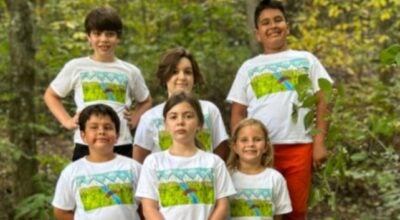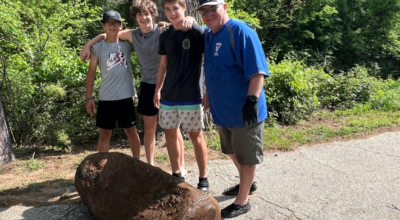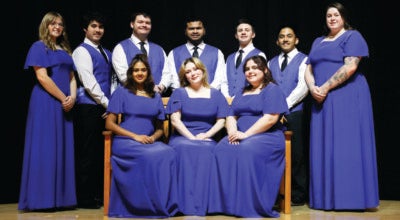Recalling the Tryon winters of my youth
Published 8:55 pm Thursday, February 25, 2010
by Alan Leonard
The recent piece in the Tryon Daily Bulletin by Emily Kerr brought a flood of memories relating to the winter snows that fell in our area from the late 1950s into the 1960s. I was a witness and a participant.
One of my earliest recollections is that of standing on a chair to look out at a snowfall in the yard of our home behind my grandfather Bert Leonards grocery store at the intersection of Harmon Field Road and Highway 176. This was probably in 1950 when I was two years old. I was impressed.
There was no snow worth remembering until the winter of 1955 when I was a student in Mrs. Alice Hilyars fourth grade classroom at Tryon Elementary School. When the flakes began to “stick” on the ground we were sent home and missed several days of class. From that time until I graduated from Tryon High in 1966 snow was a regular occurrence, mostly in February and March, and the famed Thermal Belt was put to the test, much to the chagrin of the Chamber of Commerce.
The most memorable snows for old timers are those that came in March of 1960, on the legendary “three Wednesdays in a row,” the 2nd, 9th and 16th of that month. Those storms would drop a foot or so of snow and ice followed by very cold temperatures so the white stuff “stayed around waiting for more,” as the saying went. We enjoyed an unscheduled three week vacation from our studies that year and spent every waking minute out in the snow-covered countryside in and around Tryon.
The roads stayed clogged and barely passable in spite of the best efforts of the countys several “road scrapers.” During those first snows trucks would ride the roadways with a man or two throwing sand out the back. No one seemed to be too concerned with the situation, especially us kids.
We were ill-equipped for the snowy weather as far as clothing was concerned. We went outside in cotton Wrangler jeans, our year-round uniform. I remember wearing brown leather “combat” boots from the Army-Navy store, WWII style, lace-ups with two straps and buckles at the top. They gave little protection from the snow, slush and freezing temperatures so we would frequently retreat to our house or to my dads grocery store to dry our socks and thaw our feet.
As the years went by we discovered black buckle-up galoshes and those comfortable and waterproof green lace-up rubber boots with yellowish treaded soles.
There were a few 4-wheel drive vehicles in the area, mostly “Jeeps.” Drivers equipped their rear-wheel drive autos with chains that were prone to become loose and noisy. There were no generators and no power outages that made any impression on me. If the power did fail we used candles and an oil lamp or two and went to bed early, piling on the quilts.
Since the snow was usually a surprise to everybody (including our weatherman Clyde “Cloudy” McLean at WBTV, Channel 3 in Charlotte, the only TV station that our antenna brought in), there was no rush on the stores. People seemed to be relatively content to stay at home, making their way to work when necessary.
Dr. William Bosien skied several miles from his home on Hogback Mountain Road down to “old” St. Lukes Hospital on Carolina Drive to attend to emergency patients, and I recently learned that Dr. George Vosburgh made his way to the hospital on Wednesday, March 23, 1960, the third day of spring, to deliver a baby girl, Angela Sain (Conner), who now works as an instructor at Tryon Health and Fitness.
Our local radio station, WTYN, situated just south of town at the state line, kept us posted on local happenings and provided weather observations made by Tryons official weatherman, Mr. Wayne W. Creasman. When we would wake up to find yards and driveways filling with snow the community would tune to WTYN for an announcement on the school day. As quickly as Ace Rickenbacker or Fanning Hearon would deliver the hoped-for news, kids would leap into action, dash outside to throw snowballs and build snowmen and to break out their sleds, heading for the abundant hilly streets in and around Tryon.
Our favorite hill for sledding was the steeply rising curved driveway of Mr. and Mrs. A. M. Law, whose home “Windover” was situated atop the hill opposite Leonards Grocery. The driveway then had two very sharp and steep hairpin turns that abruptly changed direction 150 degrees or so. You had to drag your feet and throw two-thirds of your body off the sled to make the curves at full speed.
At the bottom of the hill was a long flat “deceleration area,” a pull-off alongside Highway 176. Fun, fun, fun!
Inspired by the 8th Winter Olympic Games that had just been broadcast from Squaw Valley, California, my brothers and I must have climbed and raced down “Laws Hill” hundreds of times, only occasionally finding ourselves dazed but in one piece at the foot of some large and unforgiving oak tree in the edge of the woods or down an embankment.
We were joined on the hill by other kids in the neighborhood, including the Laws grandchildren, David and Andrea Erskine, Andy Hancock from up the valley, and my buddy Tim Brannon.
This went on for days, and in 1960 it went on for weeks. Mr. and Mrs. Law were kind enough to let the fun go on and never had the snow and ice plowed off the hill, which meant that Creston Vernon, who worked for them, would trudge up the hill every day to check on his employers and deliver the necessities of life. Just when conditions improved enough for WTYN to announce that school would re-open the next day, our prayers would be answered and more snow was sent to the rescue!
I recall that other popular sledding hills were Pacolet Street, down by the Kell Apartments and the Baptist Church, and the very steep Jervey Road that still joins Highway 176 at One Tryon Place.
When we younger kids retired exhausted at sundown to rest and recuperate for the next days adventures, the older high school crowd took over the hills and the night, lighting their gatherings by setting old tires ablaze. When morning came we would find the refuse of their revelry, the remains of charred tires and broken sleds, but no broken bodies that I ever saw. They once left behind a coveted boat-shaped “40 Ford hood,” which, inverted, made for adventuresome but unpredictable sledding.
Bob Erskine, David and Andreas father, built a large wooden “bobsled” and would hook it up to the back of his sedan to pull a load of kids up and down the snowy roads and around Harmon Field. We would also ride a wooden toboggan down the hill at the Brannons pasture on Warrior Drive. One winter I recall having a great time descending the hills at Tryon Country Club on large aluminum serving trays loaned to us by Theo Kerhulas at the Tea House.
When my brother and I were not sledding we explored the fields and woods in and around Harmon Field and the Pacolet Valley with our beagle “Rebel.” Harmon Field was more open in those days, giving us plenty of room to roll up gigantic snowballs for building snowmen and to use in the construction of igloos and snow forts.
With our piles of snowball “hand grenades” and toy rifles we were ready to defend Bastogne during the worst of the Battle of the Bulge. And it was a great chance to play “Sergeant Preston of the Yukon,” with old Rebel substituting for the red-coated Mounties stalwart husky, “Yukon King.” We also became arctic explorers marooned in the vast frozen waste and would pull our sleds up and down the rocky snow-covered hiking trails on the Bartols hill above Harmon Field, pretending to be Hannibal crossing the Alps, just like in the movie, but with imaginary elephants. We also tried out tracking skills learned from the pages of Outdoor Life and Sports Afield. We found plenty of tracks but no rabbits.
But it was not all fun and games. Our father would enlist us to shovel away the snow in front of his gas pumps and would press our sleds into service to deliver groceries to snowed-in customers in the neighborhood.
To me this was just another adventure. I recall pulling a sled out Warrior Drive, delivering groceries packed in cardboard boxes to Dr. Jay Derby (a pioneering Tryon dentist) and his wife Cleo, to their neighbor Mrs. Stevenson, and to two “old sisters,” Mrs. Clawson and Mrs. Stewart, who lived in the house now occupied by the Packards on Baker Drive.
We also took groceries to Mrs. McKay and her daughter Phoebe on Vineyard Road and to their neighbor, Mrs. Georgia Eddy, and to Mrs. Dorothy Britnall and the Mosseller family who lived across from Harmon Field at Seven Hearths.
And I do remember my father going to the rescue of his dear 71 year old friend, “Miss Emily” Kerr at her home on the mountain above Skyuka Road. Nathan Williams who lived near the bottom of Miss Emilys driveway also looked after her.
These were all kind, gracious and wonderful people and they would frequently reward our efforts with a quarter or a cookie, and sometimes with both.
Occasionally, to add to the fun, we would mount an expedition to “Dr. (John Z.) Prestons pond,” off of Warrior Drive, where the snow lay deep and the ice would extend some distance out from the shoreline. We knew not to venture out onto the ice-covered depths.
On one trip we found a great blue heron dead in the snow and ice at the head of the pond. We retrieved the frozen feathered corpse and transported it by sled (to the amazement of passersby) to our neighbor Mrs. Britnall, who was a bird enthusiast and an accomplished artist. Mrs. Britnall was delighted to give our find a home and she promptly painted a portrait of our great blue heron standing in the snow on the shore of Dr. Prestons Pond. I wonder where that painting is today.
We also spent a lot of time on the snow-covered banks of the Pacolet River at Harmon Field. The ice was thick enough to walk or “skate” on and where the water was calm the river might be frozen over from bank to bank. Occasionally the ice would give way or we would slip and take a plunge into the icy water. That made for a long walk home through the snow in frozen boots and blue jeans.
Jeff, you mentioned the simpler world of 50 years ago. I do remember one thing that was ominous in retrospect. We were warned not to eat newly fallen snow because it filtered radioactive “fallout” from the atmosphere, put there by the Cold War above-ground testing of nuclear weapons.
Even with those warnings we would go over into Harmon Field at least once with every new snowfall to scoop up a bowl of the white stuff to mix with milk, sugar and vanilla. So far, we have survived to recount the wonderful taste and texture of the irradiated “snow cream.”
You also mentioned those days when “music had a melody.” The 50s and 60s were a time of great popular tunes, including the “mood music” instrumentals.
The number one song for 1960, and the music that even today I connect in my mind to the snows of that year, was the ironically named “Theme from A Summer Place” (a 1959 movie) by Percy Faith. It topped the charts for nine weeks in that winter of 1960, from February 22 to April 18.
The best version that I have found on the internet is the original by Percy Faith and His Orchestra. Go to “You Tube,” www.youtube.com, type in “Theme from A Summer Place (1960),” and imagine how it sounded on those cold and snowy days coming from transistor radios tuned to 1550 AM, WTYN in Tryon!
The snows came several times each winter until I graduated from high school in 1966. The deepest that I remember was in the mid- 60s when 22 inches piled up in our front yard.
I experienced some magical snows on the campus at Chapel Hill in the late 60s, and witnessed impressive depths in the Sierra Nevadas when I was in the Air Force in the early 70s, but none were as memorable as the snows that came to Tryon and the Thermal Belt in the winters of my childhood.Tryon Daily Bulletin by Emily Kerr brought a flood of memories relating to the winter snows that fell in our area from the late 1950s into the 1960s. I was a witness and a participant.





